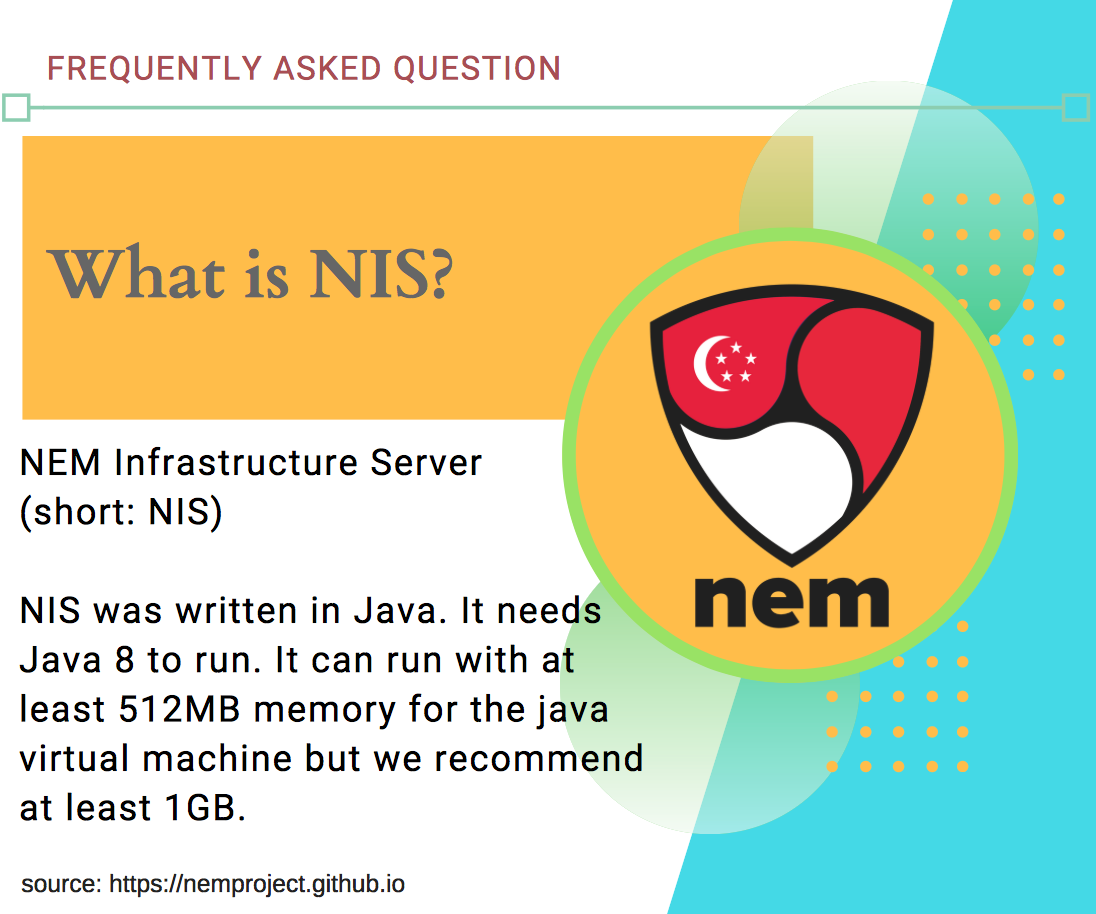
FAQ What is NIS? NEM Singapore Medium
Network Information Service (NIS) is a client-server directory service protocol used for distributed systems to maintain consistent data and configuration files throughout a network. It was initially developed by Sun Microsystems to centralize the administration of Unix systems.

NIS Server Configuration RHEL 6 Linux Vasanth NIS PART1 redhhat Linux ActiveDirectory
How to configure NIS Server in Linux This tutorial explains how to configure NIS Server and NIS Client in Linux step by step with practical example. Learn how to use NIS server for centralized authentication and how to configure it to allow network users to login only in shared home directory.

NIS 2 What The Proposed Changes Mean For Your Business
We use the Linux NIS server ( Network Information Service) for sharing critical data stored in flat files between systems on a network. It is often ideal to have a shared repository (such as NIS) for storing users and groups information instead of storing them in flat files like /etc/passwd. So what is the benefit of that?

PPT Module 17 Network Information Service (NIS) PowerPoint Presentation ID5602296
The Network Information Service, or NIS (initially called YP or yellow pages), is a mainframe-client index service convention for circulating server configuration information, for example, client and host names between PCs on a PC network. Sun Microsystems built up the NIS; the innovation is authorized to essentially all other Unix merchants.

Setting Up NIS (Part 1 of 2) Configuring a NIS SERVER YouTube
NIS Architecture NIS uses a client-server arrangement similar to DNS. provide services to NIS clients. The principal servers are called masterservers and, for reliability, they have backup or replicaservers (also referred to as slaveservers). Both server types use the NIS information retrieval

Configuration of NIS Server & Client in RHEL 8 Install & Configure NIS in Linux Nehra
NIS services information. If your network uses the Network Information Service (NIS), you must provide NIS domain and server names. The name of your NIS domain. The storage system can use an NIS domain to authenticate users and client computers. The NIS domain name must be identical on both storage systems if your network uses NIS.
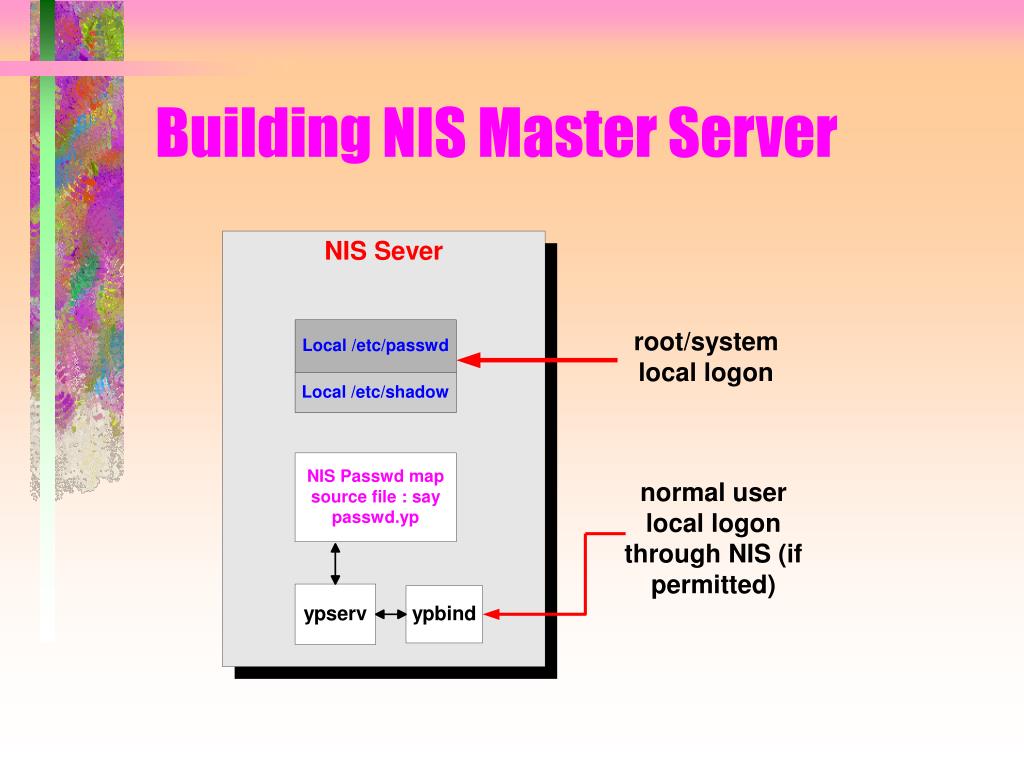
PPT Network Information Services (NIS) PowerPoint Presentation, free download ID3677962
NIS enables you to create user accounts that can be shared across all systems on your network. The description of NIS daemons are given below: portmap/rpcbind: The foundation RPC daemon upon which NIS runs. yppasswdd: Lets users change their passwords on the NIS server from NIS clients. ypserv: Main NIS server daemon.
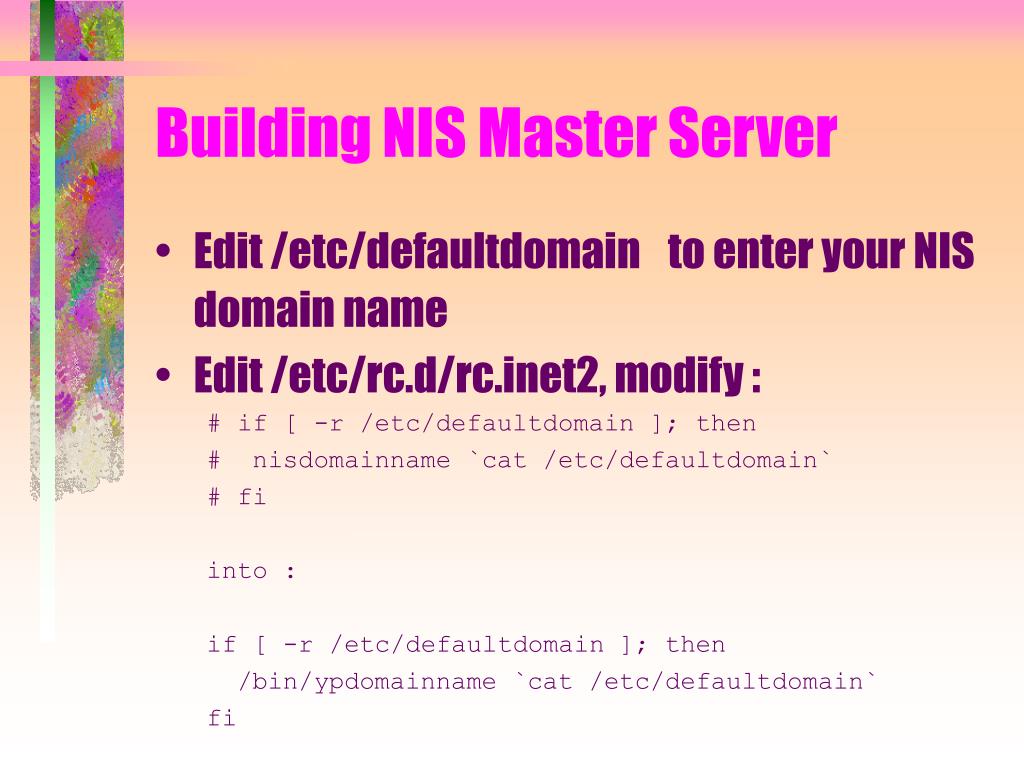
PPT Network Information Services (NIS) PowerPoint Presentation, free download ID3677962
NIS clients get information from a NIS server through the binding process, which can work in one of two modes: server-list or broadcast. Server-list. In the server-list mode, the /var/yp/binding/ list for the names of all of the NIS servers in the domain. The process binds only to servers in this file.

Session 139 NIS Server & Client Configuration in Linux Configure NIS Server Nehra
An NIS server is a host that provides configuration information to other hosts on the network. Servers retain a set of maps and run the ypserv daemon, which processes requests from clients for information contained in maps. There are two types of servers: a master server and a slave server. Master Servers
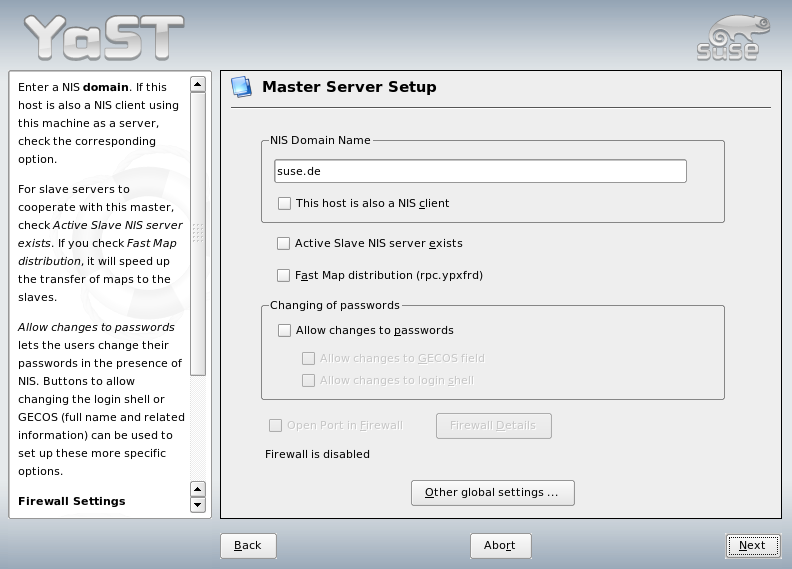
SUSE LINUX 9.3
Once NIS is running, it is no longer necessary to manage every /etc/hosts file on every machine in the network — simply updating the NIS servers ensures that all machines will be able to retrieve the new configuraton file information. NFS is a distributed filesystem.

Using NIS Security Guide SUSE Linux Enterprise Server 12 SP2
What is NIS (Network Information System) server? Last Update: December 2, 2017 NIS (Network Information System) was developed by Sun Microsystem which is a network naming and administration system for smaller networks. The later version NIS+ provides additional security and other facilities.

NIS Server and Client Installation & Configuration RHEL 8 Tech Arkit YouTube
How NIS+ works NIS+ is a new version of the network information nameservice from Sun. The biggest difference between NIS and NIS+ is that NIS+ has support for data encryption and authentication over secure RPC. The naming model of NIS+ is based upon a tree structure.

How to Create NFS, NIS Server & Client Install and Config on Redhat Linux With Example Part 14
The Network Information Service, or NIS (originally called Yellow Pages or YP ), is a client-server directory service protocol for distributing system configuration data such as user and host names between computers on a computer network. Sun Microsystems developed the NIS; the technology is licensed to virtually all other Unix vendors.
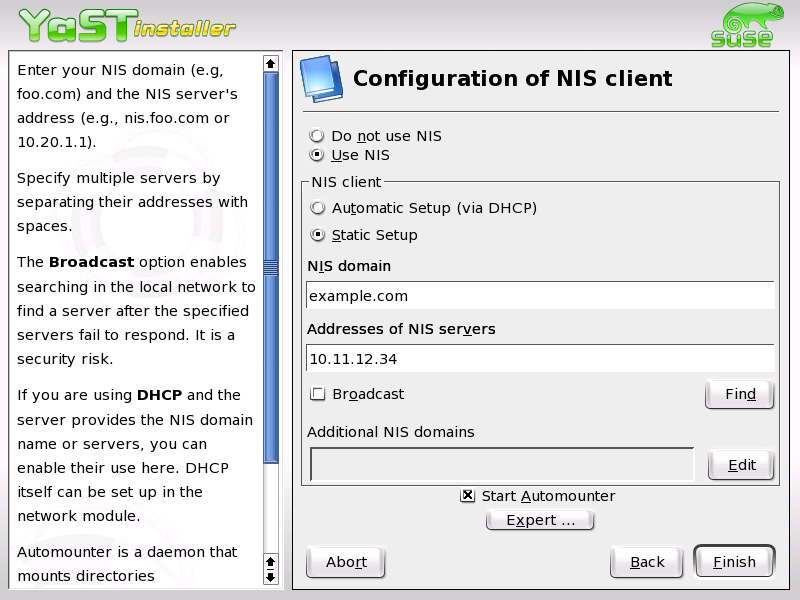
14.8. NIS — Network Information Service
NIS+ was designed to meet the requirements of networks that typically range from 100-10,000 multivendor clients supported by 10-100 specialized servers located in sites throughout the world. Such networks are often connected to several unguarded public networks. In addition, the information they store can change rapidly.
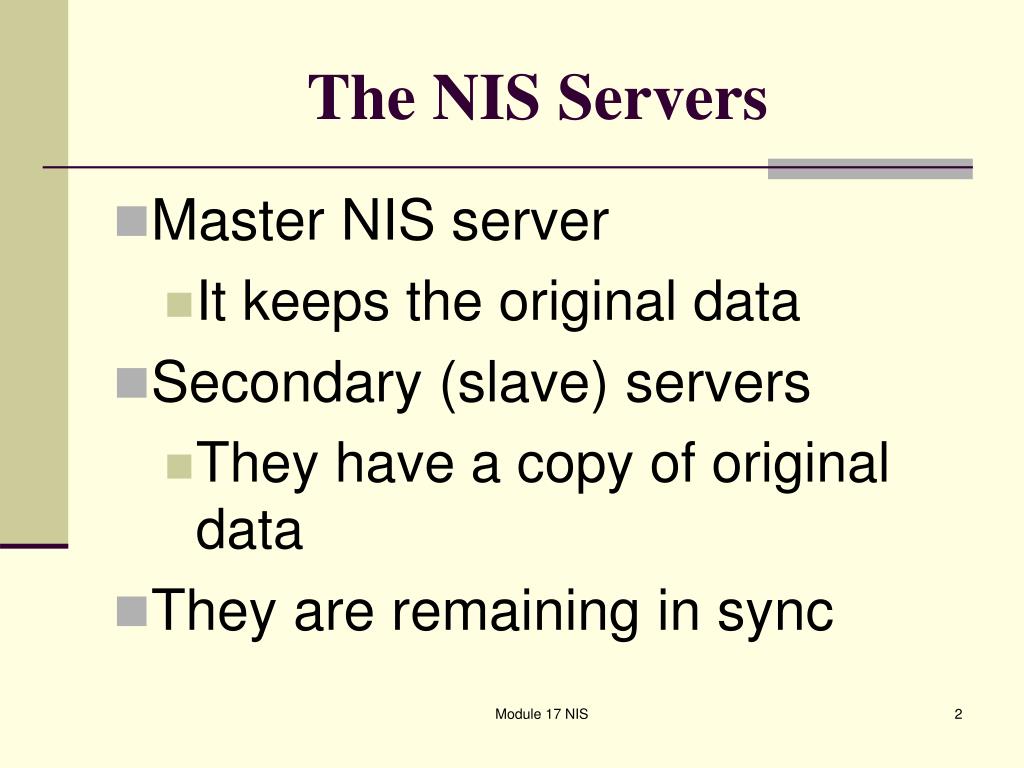
PPT Module 17 Network Information Service (NIS) PowerPoint Presentation ID5602296
NIS is a distributed naming service. It is a mechanism for identifying and locating network objects and resources. It provides a uniform storage and retrieval method for network-wide information in a transport-protocol and media-independent fashion. This chapter covers the following topics. NIS Introduction NIS Machine Types NIS Elements
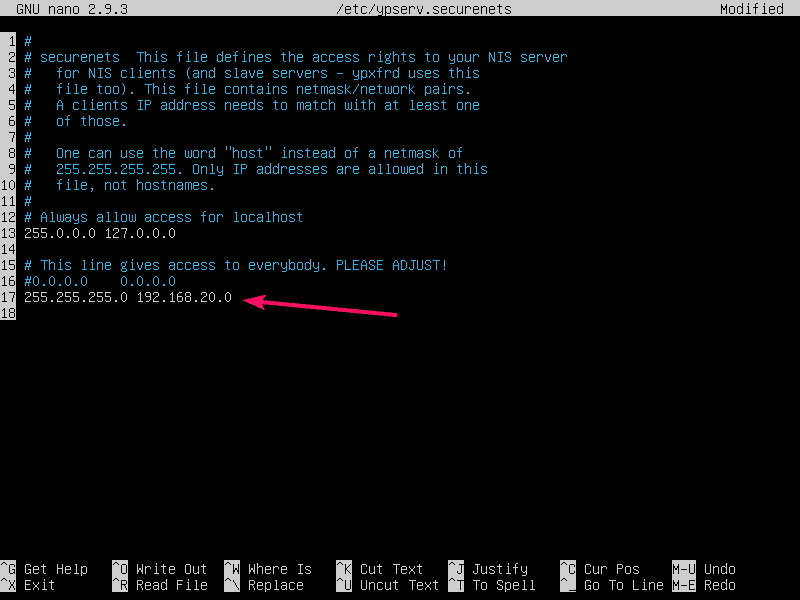
Installing NIS server on Ubuntu 18.04 LTS IDC IDC
NIS, released by Sun in the 1980s, was the first "prime time" administrative database. It was originally called the Sun Yellow Pages, but eventually had to be renamed for legal reasons. NIS commands still begin with the letters yp, so it's hard to forget the original name.